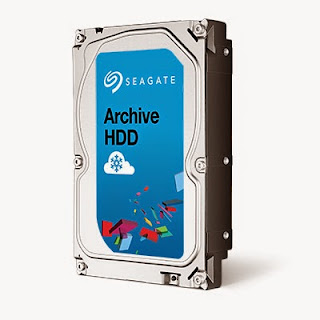This will walk you through the installation of System Center Data Protection Manager 2012 R2 (DPM 2012 R2) on Windows Server 2012 R2 Standard in a Hyper-V virtual environment.
The environment:
Virtualization
- On-premises Hyper-V using Microsoft Hyper-V Server 2012 R2
Storage Pool
The DPM will use a Direct Attached Storage (DAS) configuration with two physical HDDs for the storage pool.
- 3 TB SATA HDD
- 8 TB SATA Shingled magnetic recording (SMR) archive HDD.
 |
| File Photo Seagate ST8000 Archive HDD (4) |
The HDDs will be made available to the DPM server as virtual hard disks (VHDX).
Database
The DPM's databse will be hosted on the locally installed Microsoft's SQL 2012 Standard with SP1.
Setting up the virtual machine
Before I can start, I need a virtual machine with Windows Server 2012 R2 installed and fully patched. I create a generation 2 vm with a max memory of 8 GB dynamically assigned vRAM.
Note that the storage pool disks will be added later.
Installing SQL Server 2012 SP1 Std x64
You could also use SQL 2014 as DPM's database. Support for SQL 2014 was added in one of the U
update rollups but for this installation I will use SQL 2012 with SP1.
Prerequisite .NET Framework 3.5 (1)
I added a virtual SCSI DVD-ROM drive and inserted the Windows Server 2012 R2 Std DVD. This installed .net.(2)
Microsoft Windows [Version 6.3.9600]
(c) 2013 Microsoft Corporation. All rights reserved.
C:\Windows\system32>DISM /Online /Enable-Feature /FeatureName:NetFx3 /All /Limit
Access /Source:d:\sources\sxs
Deployment Image Servicing and Management tool
Version: 6.3.9600.17031
Image Version: 6.3.9600.17031
Enabling feature(s)
[==========================100.0%==========================]
The operation completed successfully.
C:\Windows\system32>
Several Windows Updates will be unlocked:
After the update installation, I ejected the virtual DVD and attached the virtual SQL installation DVD. I chose to install a new standalone installation.
In this screen I chose to install the Standard edition the way it comes with DPM 2012 R2. The product key is entered automatically. Express or Evaluation edition do not suffice.
The installer installed two SQL updates during the installation.
In the next screen I selected "feature installation" and all that is needed accroding to the requirements of DPM is:
- Instance Features\Database Engine Services
- Instance Features\Reporting Service - Native
And I decided to install the Management Tools
- Shared Features\Management Tools - Basic
- Shared Features\Management Tools - Complete
"Default Instance".
Now it is time to create one Domain account that will be used to run the SQL services. (3)
- SQL Server Agent
- SQL Server Database Engine
- SQL Server Reporting Services
The database engine will use Latin1_General_CI_AS
Choose
Windows authentication mode and choose one or more domain groups that will be the SQL administrators.
On the
Reporting Services Native Mode prompt choose
Install and configure.
The installation completed successfully.
Installing DPM 2012 R2
I inserted the DPM installation disc ISO into the virtual optical drive and started the DPM installation.
In the prerequisites check, I entered the hostname of the virtual machine that was supposed to host both the SQL and the DPM and clicked Check and Install.
DPM setup proceeded to install basic missing Windows components and asked for a restart.
On second attempt, I was able to proceed.
It is time to enter the product key.
There are a few options some of them rather inconsequential (Customer Experience Improvement Program) like the installation path. The installation path is not where the backups will go,
Success.
Installing Updates
I wanted to install all the updates most above all SP2 for SQL 2012 and the Rollup 6 for DPM 2012 R2.
Another reboot is due.
Readying the Storage Pool
On the hyper-v host, vhdx file were created on each physical storage pool disk
disk
3 TB disk > F:\vhds\dpm data 1.vhdx (~3 TB; dynamically expanding)
8 TB disk > G:\vhds\dpm data 2.vhdx (~8 TB; dynamically expanding)
In the VM, i brought the disks online and initialized them as GPT. Disk type basic.
Using the DPM management console \ management tab, I added the disks to the storage pool:
The populated storage pool shows 10 TiB,
Q & A
Why did you not use pass through disks for the storage pool? Firstly, because VHDX files are now a supported scenario and secondly because Microsoft has indicated that the pass through disk feature might be deprecated or and eventually removed in the future. Also, the virtual machine is supposed allow an easy live migration.
Sources
(1)
Hardware and Software Requirements for Installing SQL Server 2012
(2)
Deploy .NET Framework 3.5 by using Deployment Image Servicing and Management (DISM)
(3)
Set up the SQL Server database for DPM
(4)
http://www.seagate.com/files/www-content/product-content/hdd-fam/seagate-archive-hdd/_shared/images/archive-hdd-8tb-upper-hero-left-400x400.jpg




























